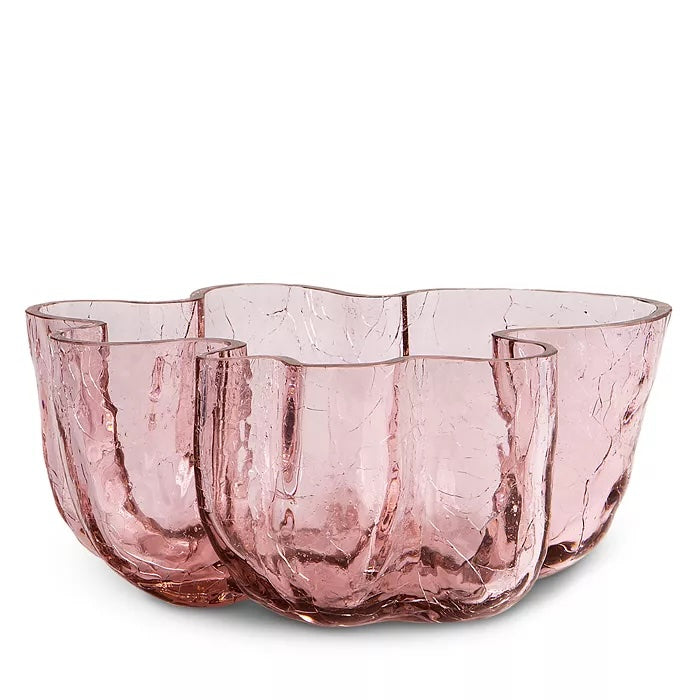Crackle Pink Bowl/Votive, Small
Fire and water converge in this glassware.
PRODUCT:
Crackle is a mouth-blown Collection with a distinctive, organic look. It is made using a technique in which hot glass is cooled in ice-cold water. The meeting of hot and cold produces a crackled surface, hence the name, Crackle. The pieces in this collection were meant to be used: for serving, for storage, for spending time with friends and family. Each piece in the collection can stand alone as a solo player, and they all work well together as a group.
The Crackle collection celebrates cracks, beautifully preserved in glass. Like a moment paused in time, when the frozen ice has just cracked. “I have revealed the expressive shape of the clay. The convergence of hot glass and cold water creates a crackled finish. I wanted to create a surface reminiscent of frozen, crusted ice. A crunchy, crackling feel. The technique is old, but I use it in my own personal way. The Crackle serious is mouthblown in Kosta.” – Asa Jungnelius.
DETAILS:
- Crackle Collection
- Designed in 2020
- Functional art object; appealing both with and without flowers
- Handmade and Mouth-blown in Kosta, Sweden
- Winner Red Dot Design Award 2023 (for Recycled Blue)
- Available in various colors
- Designed by Åsa Jungnelius
- Care instructions Wipe with cloth.
MAKER STORY:
The glassworks in Kosta was founded in 1742. The name was created from the surnames of the founders, Generals Koskull and Staël von Holstein. Kosta’s location, in the heart of the dense forests in the Swedish province of Småland, was chosen so that the glassworks could provide both Stockholm and Karlskrona with glass. Important roads crossed here, and there was also an unlimited supply of wood to heat the furnaces. Fine utility glassware was made here during the first 150 years of the company’s existence and comprised products such as window panes, bottles and drinkware, but also glass chandeliers and similar items. The customers included royalty, nobility and wealthy merchants who could afford the costly glassware. For a long time, the glassblowers came from Bohemia, which is now part of the Czech Republic. Many decades passed before Swedes learnt how to blow glass. Kosta exhibited its products at the General Art and Industrial Exposition of Stockholm in 1897, but was criticised because its glassware mostly resembled items made in other parts of Europe. This gave the company the idea of employing its own designers. The idea rapidly gained ground and remains the actual foundation of the way in which the glassworks continually develops its product range.
Handmade, Organic
Pickup available at 365 Collective by Abigail Fox + Serendipity
Usually ready in 24 hours


